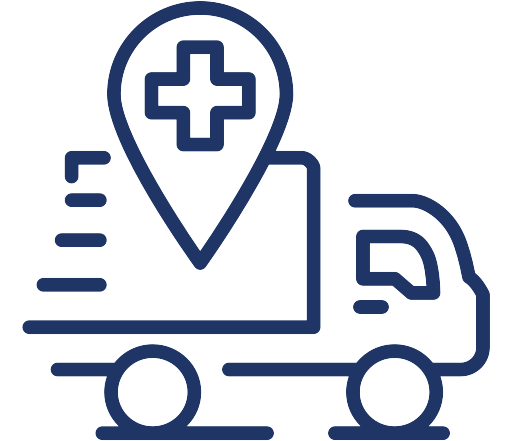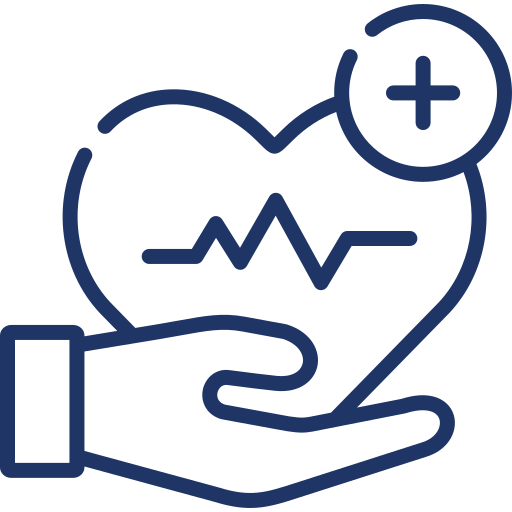Worried about breast cancer? You’re not alone. It’s understandable to have concerns about breast cancer. You probably may have experienced it yourself or through a family member or friend. This guide aims to help you understand the details of breast cancer more. Knowing the early signs, the types, and even ways to prevent the disease can help answer any questions you may have so you may focus on living a healthy life.
What is breast cancer?
Breast cancer is a type of cancer that forms in the cells of one or both breasts. Some cells grow and divide more rapidly than healthy cells, creating a lump of tissue called a tumor. Most breast tumors are benign, meaning they’re not harmful. But their presence increases the risk of developing malignant tumors. Breast cancer often begins in the milk-producing ducts of the breasts, but it can also start in other cells or tissues within the breasts.
What causes breast cancer?
There are no clear details about what causes every type of breast cancer. But health experts say that hormones, lifestyle, environmental factors, and genes can increase a person’s chances of getting the disease.
Can men get breast cancer?
Although it’s more common in women, men can get breast cancer too. According to the Centers for Disease Control and Prevention, about one out of a hundred breast cancer cases in the United States is a man. We are all born with a small amount of breast tissue. So even if the male’s breast doesn’t develop more tissue, there’s still enough for cells to grow and divide uncontrollably.
How is breast cancer diagnosed?
Breast specialists or surgeons often use additional tests to help diagnose breast cancer. Tests also help determine if a lumpectomy or mastectomy is needed or if less invasive treatment options are practical. While you can easily feel a mass of tissue through a self-exam, the following tests can help confirm what those lumps are and determine if they’re cancerous or not.
- Breast ultrasound: An ultrasound of the breast involves using a machine that uses sound waves to create images, called sonograms, of the areas within the breast.
- Mammogram: Screening and diagnostic mammograms are x-rays for breasts. Screening mammograms check for any sign of breast cancer among individuals with no apparent symptoms. A diagnostic mammogram is a more detailed x-ray used for confirming suspicious screening results or lumps on the breasts.
- Breast magnetic resonance imaging: An MRI scan can also diagnose breast cancer. This scanning equipment uses a magnet linked to a computer to take detailed images of what’s inside the breasts.
- Biopsy: A biopsy is a test wherein a doctor takes a piece of tissue or fluid from the breast with suspicious symptoms. The sample is then reviewed under a microscope or tested further.
These are the most common tests used to help diagnose breast cancer. However newer tests are being developed and some are already being used in some medical facilities. Others are still under study to determine if they can help to make detection faster, easier, and more accurate.
What are the symptoms of breast cancer?
An important part of breast care is to study your breasts in the mirror. You should know how they normally look and feel. Routine screening can help detect early signs of breast cancer, but not every test will find it. So, as a precaution, you should check for changes in your breasts.
What are the top seven symptoms of breast cancer?
The signs of breast cancer are different for different people. Some may not even have symptoms at all. The seven most common signs are:
- Lump or thick mass in the breast or underarm
- Full or partial swelling in the breast
- Changes in breast size or shape
- Breast pain or nipple pain
- Nipple discharge that’s not breast milk
- Swollen lymph nodes near the collarbone or underarm
- Irritation and dimpling of the skin over the breast, similar to an orange peel
What is the earliest symptom of breast cancer?
The most common symptom of breast cancer is a lump in breasts or the armpit. Swollen lymph nodes along the collar bone or underarm are also considered an early sign of breast cancer. According to the American Cancer Society, swollen lymph nodes are often detected earlier before a tumor is large enough to be felt.
How does your body feel when you have breast cancer?
Breast cancer symptoms often affect the breast area only. You’ll only notice changes in other parts of the body if cancer has spread. Such changes may vary depending on the type of breast cancer you have. Like most cancers, people with possible breast cancer disease may experience sudden rapid weight loss, weakness, and excessive fatigue.
Types of breast cancer
There are many different types of breast cancer. It can be confusing as there are many different ways to describe each one. In a nutshell, doctors determine a type based on the specific cells that become cancerous.
- Ductal Carcinoma In Situ (DCIS)
- Invasive Ductal Carcinoma (IDC)
- Lobular Carcinoma In Situ (LCIS)
- Invasive Lobular Cancer (ILC)
- Triple Negative Breast Cancer
- Inflammatory Breast Cancer (IBC)
- Metastatic Breast Cancer
- Breast Cancer During Pregnancy
Risk factors of breast cancer
Your chances of getting breast cancer are due to one or more risk factors. It’s important, however, to know that whether you have or don’t have any of these risk factors, you may or may not get breast cancer. The main difference is that those who are more at risk may need to consult with a doctor on how to lower their risks and may need to have regular breast cancer screenings.
Invariable risk factors
- Age 50 years old or more
- Inherited genetic mutations on BRCA1 or BRCA2 genes
- Starting menstrual periods before age 12
- Starting menopause after age 55
- Amount of fibrous and glandular tissue in the breasts
- History of breast cancer or non-cancerous breast disease
- Family history of breast or ovarian cancer
- Radiation therapy on the chest or breasts before age 30
- Exposure to Diethylstilbestrol or DES, a synthetic form of the female hormone estrogen
- Born from mothers who took DES while pregnant with them
Variable risk factors
- Lack of exercise or any physical activity
- Overweight or obesity after menopause
- Hormone replacement therapy
- Oral contraceptives like birth control pills
- First pregnancy after age 30
- Not breastfeeding
- Not having full-term pregnancies
- Alcohol intake
- Smoking
- Hormone changes caused by night shift work
Breast cancer prevention
There’s no proven way to prevent breast cancer but there are ways to help lower your risk of getting the disease.
- Limit your alcohol intake. The more you drink, the higher your breast cancer risk.
- Maintain a healthy diet to maintain a healthy weight.
- Dedicate two to three hours of moderate physical activities every week.
- For women, breastfeeding may help provide a protective effect against breast cancer.
- Avoid or limit postmenopausal hormone therapy. If you must do it, use the lowest dose possible.
- Perform a self-exam regularly. If you suspect a lump, inform your doctor immediately.
About breast cancer awareness month
October is national breast cancer awareness month. This annual campaign, recognized by its pink breast cancer symbol, aims to make everyone aware of breast cancer and its impact on all people, especially women. In this month of breast cancer awareness, the focus is to provide support for further research and funding to find ways to boost diagnosis and treatment.
Every breast awareness day of the month is a commitment to help each other defeat breast cancer. Wear your breast cancer survivor ribbon proudly to help spread the word and to pay tribute to those who survived and remember those who didn’t. Take action now if you think you or someone you know may have breast cancer.
Early detection is key
Breast cancer is one of the most common cancers diagnosed in the US. Although it can occur in both men and women, it’s more common in women. No matter who you are or where in the world you’re located, breast care is an important part of your life.
Good awareness of breast cancer, its early signs and symptoms, and its risk factors can help you take control of your health. Having a better understanding of the disease, breast self-awareness, and knowing what early signs to check for can help increase the rate of survival and the success of treatments. Get screened for breast cancer now!
 (917) 310-3371
(917) 310-3371


